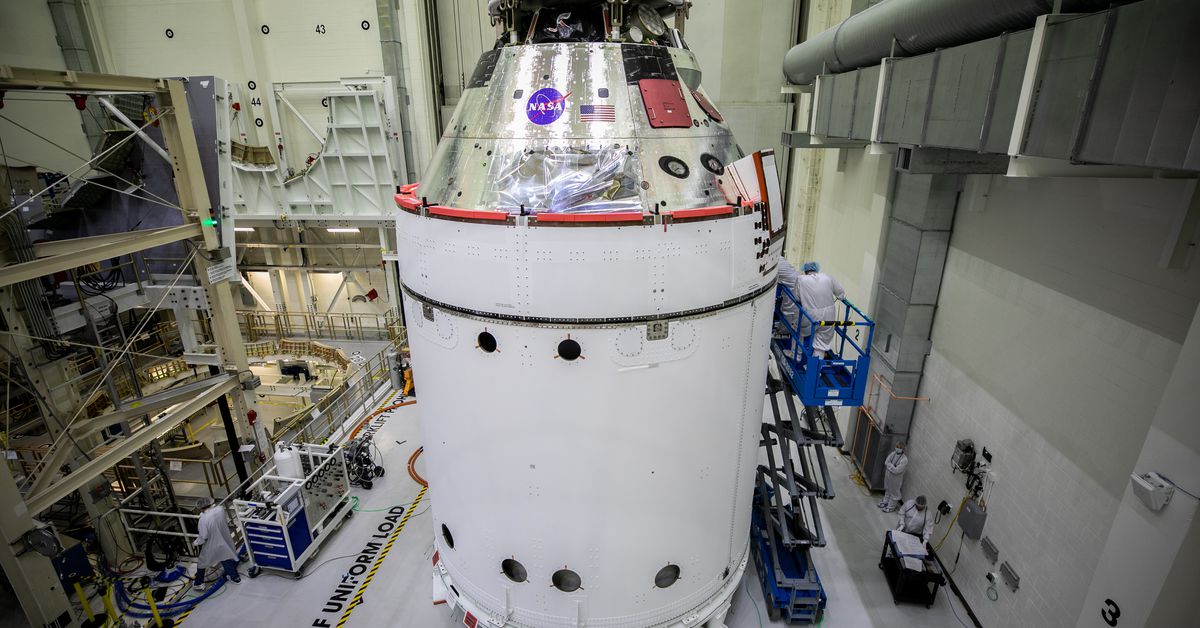NASA will fly Orion deep-space crew capsule ‘as is,’ despite failed component
Source: The Verge added 18th Dec 2020NASA is opting to fly its future deep-space crew capsule Orion “as is” next year, after the agency discovered that one of the spacecraft’s power instruments had suffered a failure. Engineers had been mulling over whether to replace the instrument before the vehicle’s flight but ultimately decided that there was enough redundancy in the system to withstand the failed component.
“NASA has confidence in the health of the overall power and data system, which has been through thousands of hours of powered operations and testing,” the agency wrote in a blog post announcing the decision. “Engineers will perform additional testing and continue to monitor the health of the spacecraft while Orion is powered on to provide continued confidence in the system.”
In November, engineers at NASA and Lockheed Martin, Orion’s primary contractor, found that part of an instrument known as a power and data unit, or PDU, had failed. One of eight PDUs on Orion, the instrument is needed for activating various functions while the capsule is in flight. It’s also in a fairly hard-to-reach place. This PDU is located in the adapter that connects the Orion capsule with its service module, a cylindrical trunk that supports the vehicle during flight.
Replacing the PDU wouldn’t exactly be a quick fix. Engineers were looking at options that would have taken four to 12 months to complete. The fixes would have involved either taking apart the vehicle or tunneling through the outer walls to reach the PDU, and the extra time could have potentially caused a delay for Orion’s target launch date in November 2021. Instead, NASA has chosen not to replace the PDU. The instrument can still function; it just lost one of its power channels used for redundancy. That means this PDU will fly without a backup system in case its primary channel fails.
NASA claims that fixing the PDU presented more risk than flying with the PDU. “[Engineers] determined that due to the limited accessibility to this particular box, the degree of intrusiveness to the overall spacecraft systems, and other factors, the risk of collateral damage outweighed the risk associated with the loss of one leg of redundancy in a highly redundant system,” the agency wrote in its blog post. “Therefore, NASA has made the decision to proceed with vehicle processing.”
No people will be on board this Orion spacecraft when it flies. The vehicle is slated to fly uncrewed on top of NASA’s future massive rocket, the Space Launch System, or SLS. That rocket is also undergoing testing ahead of that flight, and it’s unclear if it will be ready by November 2021.
brands: Fly Orion other Quick Fix Space Unit media: 'The Verge' keywords: NASA
Related posts
Notice: Undefined variable: all_related in /var/www/vhosts/rondea.com/httpdocs/wp-content/themes/rondea-2-0/single-article.php on line 88
Notice: Undefined variable: all_related in /var/www/vhosts/rondea.com/httpdocs/wp-content/themes/rondea-2-0/single-article.php on line 88
Related Products
Notice: Undefined variable: all_related in /var/www/vhosts/rondea.com/httpdocs/wp-content/themes/rondea-2-0/single-article.php on line 91
Warning: Invalid argument supplied for foreach() in /var/www/vhosts/rondea.com/httpdocs/wp-content/themes/rondea-2-0/single-article.php on line 91
